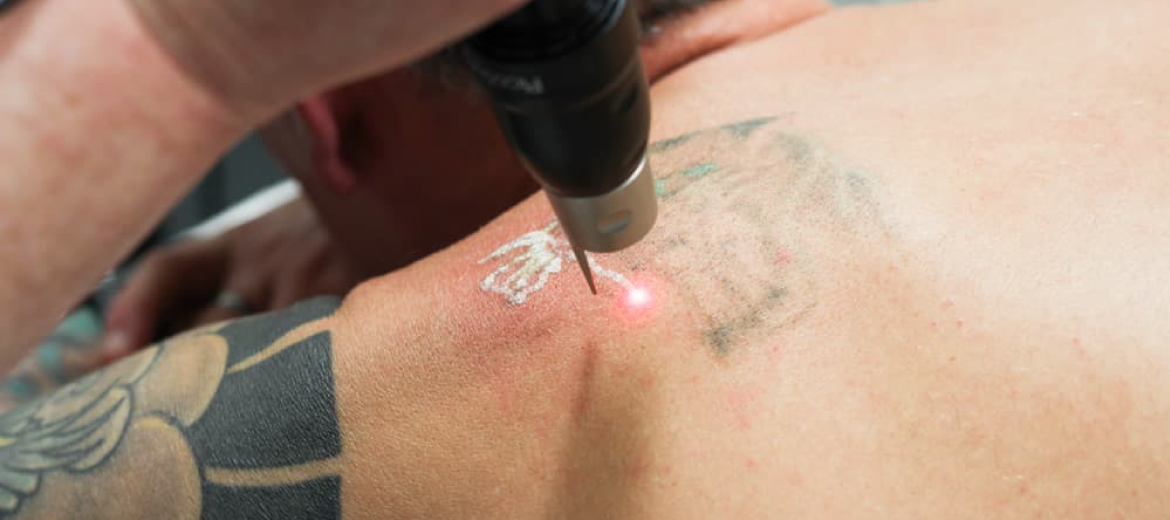Can You Remove Colored Tattoos? Dubai Experts Explain

Tattoos have been a form of self-expression for centuries, but sometimes, people change their minds about their ink. While black tattoos are known to be the easiest to remove, colored tattoos present a unique challenge due to the variety of pigments used. Experts in Dubai provide insight into how Laser Tattoo Removal Dubai.
Why Are Colored Tattoos Harder to Remove?
Colored tattoos are more complex to remove than black ink because different pigments absorb light at different wavelengths. Unlike black ink, which absorbs all laser wavelengths, colors such as blue, green, red, and yellow require specific laser settings to break down the pigment effectively.
Ink Composition and Its Impact
Tattoo ink is made up of various compounds, some of which react differently under laser exposure. Certain colors are more resistant to laser energy, making the process more challenging. The depth of the ink in the skin also influences how easily it can be broken down.
Skin Type and Its Role
Skin type plays a crucial role in the removal process. Different skin tones absorb light differently, which can impact the effectiveness of laser treatment. Lighter skin tones generally experience faster fading, while darker skin requires more precise laser settings to avoid unwanted pigmentation changes.
Laser Technology for Colored Tattoo Removal
Modern laser technology has made it possible to target and remove colored tattoos more efficiently than ever before. Various laser systems are used to break down different pigments.
Types of Laser Used
Several laser types are effective for colored tattoo removal. Each one targets specific colors to ensure optimal fading.
- Q-switched Lasers: These lasers deliver short bursts of high-energy light that fragment ink particles. They are effective for darker colors and some bright hues.
- Picosecond Lasers: Considered more advanced, these lasers break down ink into finer particles, allowing the body to remove them more efficiently. They are particularly effective for stubborn colors like blue and green.
The Science Behind Laser Tattoo Removal
Laser technology works by delivering concentrated light pulses into the skin, which shatter the ink particles into smaller fragments. These fragments are then eliminated through the body's natural processes over time. Different wavelengths are required to target specific ink colors, making the removal of multicolored tattoos more intricate.

Factors That Affect the Removal Process
Removing a colored tattoo is not a one-size-fits-all process. Several factors influence how quickly and effectively a tattoo fades.
Tattoo Age and Depth
Older tattoos tend to fade more easily because the ink has already started breaking down naturally over time. Newer tattoos with fresh ink can take longer to remove. Additionally, tattoos that are placed deeper in the skin require more sessions for complete removal.
Ink Density and Saturation
Heavily saturated tattoos, particularly those with multiple layers of ink, require more treatments to break down the pigment. Lighter applications of ink typically respond faster to laser therapy.
Tattoo Location on the Body
The location of a tattoo also plays a role in how quickly it can be removed. Areas with better blood circulation, such as the chest or upper arms, often experience faster fading. Tattoos on extremities, like hands and feet, may take longer due to reduced circulation in these areas.
How Long Does It Take to Remove a Colored Tattoo?
The duration of the removal process varies depending on several factors, including the colors involved, the size of the tattoo, and individual skin characteristics. While some tattoos begin to fade after just a few sessions, complete removal may take multiple treatments spaced several weeks apart.
Number of Sessions Required
Colored tattoos typically require more sessions compared to black ink tattoos. Depending on the pigment and ink depth, it can take anywhere from several months to over a year to achieve the desired results.
Spacing Between Sessions
The time between sessions is crucial for effective removal. The body needs time to process and eliminate the fragmented ink particles. Most experts recommend waiting a few weeks between treatments to allow proper healing and ink breakdown.
Alternatives to Laser Removal
While laser technology remains the most effective method for colored tattoo removal, there are other approaches that people explore.
Tattoo Cover-Up
For those who prefer not to go through the Laser Tattoo Removal in Dubai a cover-up tattoo is an alternative. Skilled tattoo artists can design a new tattoo that incorporates or masks the existing ink.
Fading for a New Tattoo Design
Some individuals choose to undergo partial removal to lighten a tattoo before getting a new design. This technique allows for greater flexibility in covering up unwanted tattoos.
Conclusion
Colored tattoo removal is a complex but achievable process with the right technology and expertise. While it requires multiple sessions and specialized laser treatments, advancements in laser technology have made it possible to remove even the most stubborn pigments. With patience and professional guidance, individuals can successfully achieve their tattoo removal goals.
